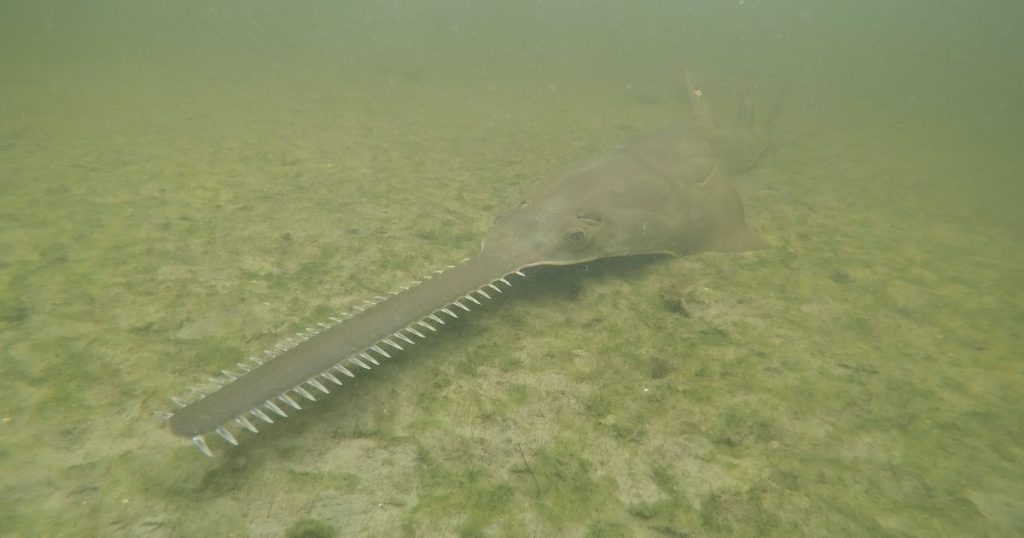Endangered smalltooth sawfish in Florida are displaying erratic spinning behavior and dying in unusually high numbers, prompting federal and state wildlife agencies to launch an emergency response effort to rescue and rehabilitate the creatures. The National Oceanic and Atmospheric Administration (NOAA) is spearheading the initiative, focusing on the Florida Keys region. Sawfish, which have remained relatively unchanged for millions of years, are now mainly found in southwestern Florida and the Keys island chain as their habitats continue to shrink. The unusual mortality event affecting the sawfish has resulted in the deaths of at least 28 individuals, with a total of 109 impacted by the phenomenon.
Sawfish, which are related to rays, skates, and sharks, have elongated, flat snouts with teeth on each side. They can live for decades and grow to substantial sizes, reaching up to 16 feet in length. The efforts to rescue and rehabilitate the sawfish are unprecedented, as there has never been an attempt to do so before. Wildlife officials have documented abnormal behavior among the sawfish, including spinning and whirling in the water, as well as reports of similar activities in other fish species. Sawfish, due to being negatively buoyant, are unlikely to float after death, potentially leading to a higher mortality rate than reported.
Despite ongoing water testing and necropsies, officials have not been able to pinpoint a specific cause for the sawfish deaths and unusual behaviors. Pathogens, bacterial infections, low oxygen levels, contaminants, and toxic red tides have all been ruled out as contributing factors. The impact of a recent prolonged heat wave in Florida waters, attributed to climate change, is also being considered as a potential cause for the sawfish issues. The collaboration between wildlife agencies and rehabilitation organizations, such as Mote Marine Laboratory and Aquarium, aims to address the mystery surrounding the sawfish situation and potentially help mitigate its impact on the endangered population.
Rescue efforts for the sawfish rely heavily on tips and sightings from the public regarding dead or distressed individuals. A tipline established by NOAA and an email provided by the Florida Fish and Wildlife Conservation Commission (FWC) allow for the reporting of such sightings. The goal is to locate and rescue sawfish in distress, as well as to rehabilitate and release them back into the wild under specific care guidelines. Even a small number of sawfish deaths could have a significant impact on the endangered population, which has been listed as endangered since 2003.
The situation with the sawfish in Florida is reminiscent of a recent mass die-off of threatened manatees in the state’s waters, where pollution led to the depletion of their seagrass food source. State and federal efforts to feed manatees tons of lettuce outside a power plant helped mitigate the impact, with manatee deaths decreasing in subsequent years. The parallels between these two wildlife crises showcase the complex interplay between human activities, environmental changes, and the health of marine species. Continued monitoring, research, and conservation actions are crucial to protecting these endangered animals and their ecosystems.


